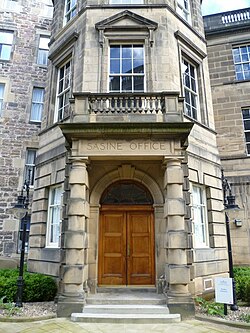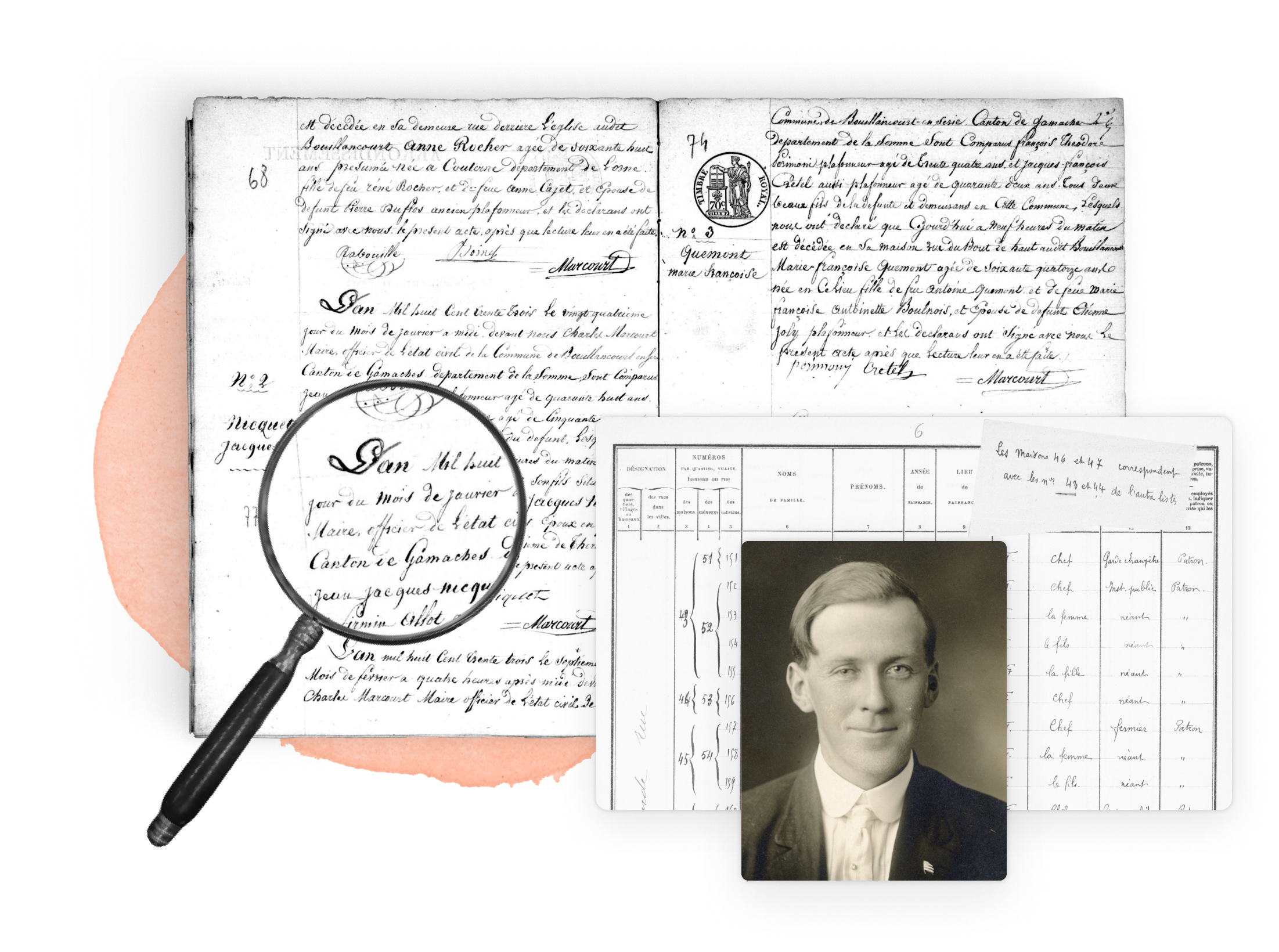
Land records in Scotland are distinct from those in England and Wales due to the retention of the feudal system until 2004,[1] which impacts the types of records and vocabulary used regarding land ownership. The Land Register of Scotland (the Scottish equivalent of HM Land Registry in England and Wales) only dates back to 1981. Nevertheless, there is a wealth of documentation to peruse when researching Scottish landowners and occupiers. This includes the General Register of Sasines, valuation rolls, and retours of services to heirs.
Research your ancestors on MyHeritage
Types of land records in Scotland
Registers of sasines

Registers of sasine (the delivery of feudal property, typically land) were established in the 16th century as a way of keeping a written record of property and land conveyance from one party to another. The records refer to 'heritable property,' meaning both land and the buildings within it. As the registers became increasingly large and complex to peruse, summaries were compiled from 1821 onward. The information contained includes the names of both parties and a description of who owned what piece of land and when. Relationships are sometimes stated, such as 'John McDonald, the son of William McDonald'. The registers cover all manner of conveyance including mortgages, dispositions and charters.
For earlier records made prior to 1721, records should be sought via the Particular or Royal Burgh register for the relevant area first, before searching the General register if this is unsuccessful. These are held by the National Records of Scotland, with indexes available from ScotlandsPeople.
Retours of services to heirs
These records were created when a person established their right to inherit a piece of land from a deceased relative from 1530 onwards. They are highly useful genealogical documents naming the heir, the deceased and their relationship to each other. The land or property is often detailed and the deceased's date of death is sometimes provided. As there was no time limit for recording a retour (a historical legal process in Scotland used to establish and confirm the inheritance of land), many are backdated. This may occur when a person needed to authorise their own land ownership prior to sale or if they became seriously unwell. Records are held by the National Records of Scotland and are normally in Latin until 1847.
Valuation rolls
Valuation rolls can be found in Scotland from 1855 to the present day. They list the name of the owner, occupier, tenants and the property value. These can be used to track the location of named people in between census returns. They can also hint at a landowner's financial status according to the value assigned. Valuation rolls are also useful to house historians who can track property ownership and changing value. The records are held by National Records of Scotland.
Maps

Maps are crucial for researching land ownership and can be used to track changing land boundaries and changes in land use. They may also show properties on the land being lost or being built. Ordnance Survey maps are highly accurate and a reliable source for initial research from the 19th century onwards. Evidence of land ownership can be found in other maps of the same area, including estate maps, town plans and those created by railway and canal companies for use when creating new services.
Inland revenue survey
Between 1910 and1915, the Inland Revenue conducted a survey of land ownership and value, recording nearly all of the land in Scotland. The records consist of field books and maps which can be used in conjunction to see where the land was held and the information about the site itself. Layouts of property are frequently found in great detail. The names of the owner and lead occupier are given alongside the property details. The records are held by the National Records of Scotland.
Other sources of land records in Scotland
- Court records: Evidence of land ownership can be found within Scotland's civil and criminal court records. This may surround a dispute over land ownership or inheritance or evictions of tenants.
- Teind records: These are the closest Scottish equivalent to tithe (a tax levied on agricultural produce for the church) records and name land owners, occupiers and the land in question.
- Newspaper records: Land owners were frequently named in newspaper articles. This may be regarding the selling of their land or within the courts section, for example if there was criminal activity occurring on their property or if there was a civil dispute over boundary ownership.
- Estate records: These may include maps, correspondence, and deeds referring to landowners. The amount of detail varies considerably between each estate. Some are retained at local archives, with others remaining in private hands.
- Land Register of Scotland: This is the official listing of land conveyance in Scotland, however it only dates back to 1981.
Explore more about Land records in Scotland
- United Kingdom - Land & Property record collections at MyHeritage
- Inheritance in Scotland – Wills, Testaments, and Land Records at Legacy Family Tree Webinars
- Land Records Solve Research Problems at Legacy Family Tree Webinars
- Inheriting Land and Buildings at National Records of Scotland
References
- ↑ Abolition of the feudal system. Law Society of Scotland


